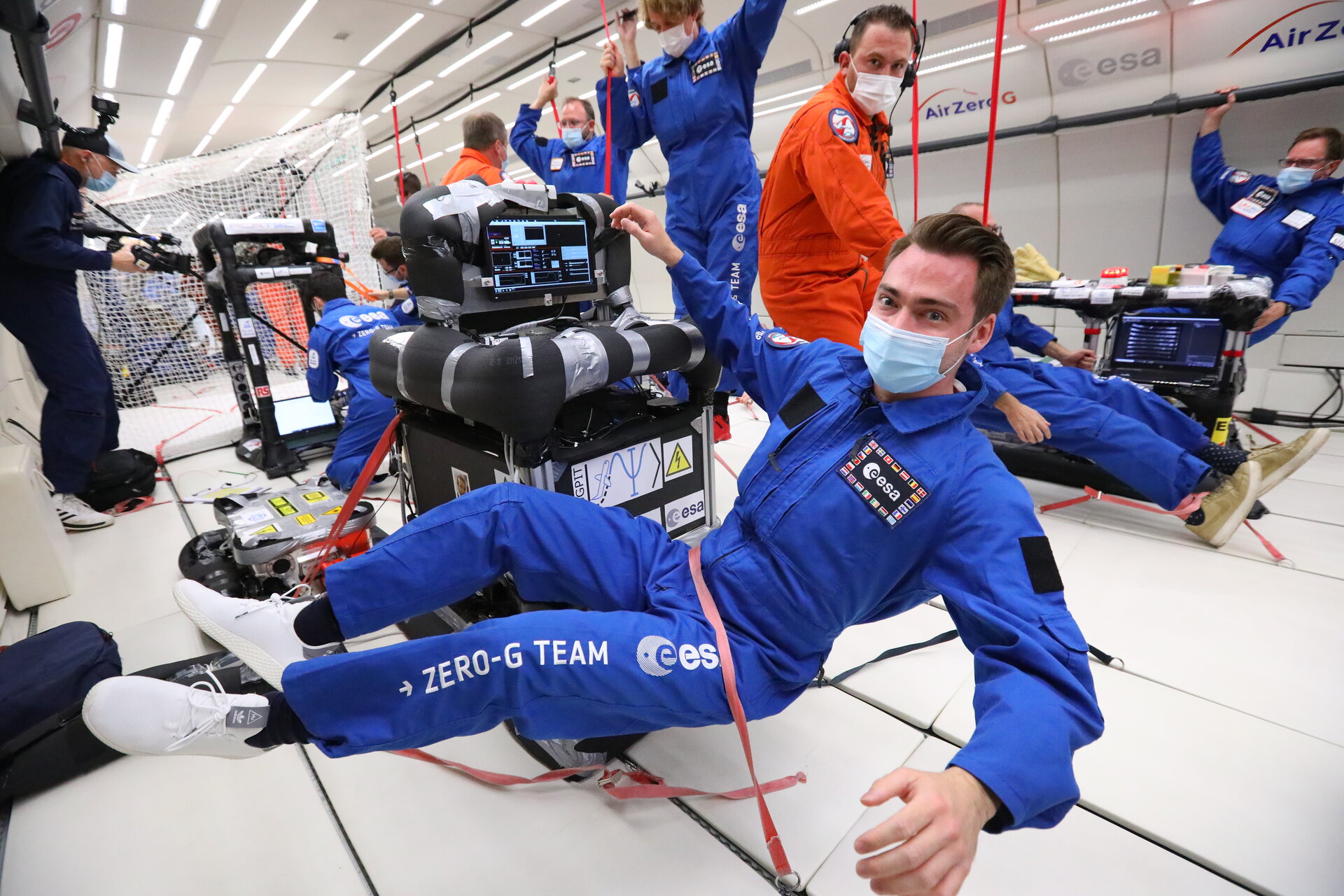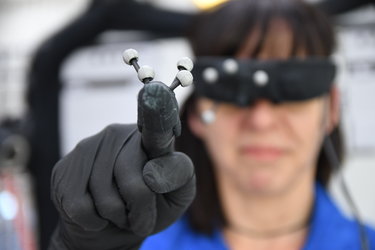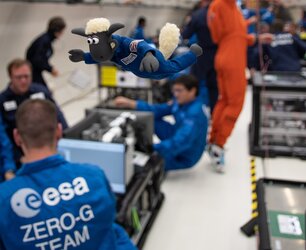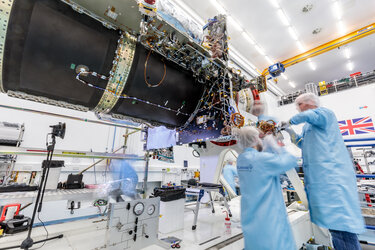Accept all cookies Accept only essential cookies See our Cookie Notice

About ESA
The European Space Agency (ESA) is Europe’s gateway to space. Its mission is to shape the development of Europe’s space capability and ensure that investment in space continues to deliver benefits to the citizens of Europe and the world.
Highlights
ESA - United space in Europe
This is ESA ESA facts Member States & Cooperating States Funding Director General Top management For Member State Delegations European vision European Space Policy ESA & EU Space Councils Responsibility & Sustainability Annual Report Calendar of meetings Corporate newsEstablishments & sites
ESA Headquarters ESA ESTEC ESA ESOC ESA ESRIN ESA EAC ESA ESAC Europe's Spaceport ESA ESEC ESA ECSAT Brussels Office Washington OfficeWorking with ESA
Business with ESA ESA Commercialisation Gateway Law at ESA Careers Cyber resilience at ESA IT at ESA Newsroom Partnerships Merchandising Licence Education Open Space Innovation Platform Integrity and Reporting Administrative Tribunal Health and SafetyMore about ESA
History ESA Historical Archives Exhibitions Publications Art & Culture ESA Merchandise Kids Diversity ESA Brand CentreLatest
Space in Member States
Find out more about space activities in our 23 Member States, and understand how ESA works together with their national agencies, institutions and organisations.
Science & Exploration
Exploring our Solar System and unlocking the secrets of the Universe
Go to topicAstronauts
Missions
Juice Euclid Webb Solar Orbiter BepiColombo Gaia ExoMars Cheops Exoplanet missions More missionsActivities
International Space Station Orion service module Gateway Concordia Caves & Pangaea BenefitsLatest
Space Safety
Protecting life and infrastructure on Earth and in orbit
Go to topicAsteroids
Asteroids and Planetary Defence Asteroid danger explained Flyeye telescope: asteroid detection Hera mission: asteroid deflection Near-Earth Object Coordination CentreSpace junk
About space debris Space debris by the numbers Space Environment Report In space refuelling, refurbishing and removingSafety from space
Clean Space ecodesign Zero Debris Technologies Space for Earth Supporting Sustainable DevelopmentLatest
Applications
Using space to benefit citizens and meet future challenges on Earth
Go to topicObserving the Earth
Observing the Earth Future EO Copernicus Meteorology Space for our climate Satellite missionsCommercialisation
ESA Commercialisation Gateway Open Space Innovation Platform Business Incubation ESA Space SolutionsLatest
Enabling & Support
Making space accessible and developing the technologies for the future
Go to topicBuilding missions
Space Engineering and Technology Test centre Laboratories Concurrent Design Facility Preparing for the future Shaping the Future Discovery and Preparation Advanced Concepts TeamSpace transportation
Space Transportation Ariane Vega Space Rider Future space transportation Boost! Europe's Spaceport Launches from Europe's Spaceport from 2012Latest

Quantum hardware during parabolic flight
Thank you for liking
You have already liked this page, you can only like it once!
Quantum hardware experiencing weightlessness during an ESA parabolic flight.
As quantum technology continues to shape our future, quantum entanglement remains a crucial element in unlocking valuable space applications, but how robust is it?
To make this technology practical, we need quantum hardware that can withstand all environments – from your pocket to a spacecraft in orbit. Scientists wanted to test the robustness of quantum entanglement and came to the European Space Agency’s suite of research platforms to find answers.
To push the boundaries, they put their quantum hardware through rocky rides. Their goal was to study the subtle gravitational effects on a quantum system, while exploring the connections between relativity and quantum physics. This could help us understand fluctuations responsible for the large-scale structure of the Universe.
In a first test, during a car trip through Vienna, Austria, and its hilly outskirts, a quantum test setup was put on a journey. This included sharp turns and bumpy roads, experiencing acceleration in all directions, thus proving the robustness of the electronics and apparatus.
In a further test, the hardware was dropped from a tower at the Technical University of Dresden, Germany, and spun in a centrifuge in Ranshofen, Austria, where the hardware experienced accelerations as little as 30 mg and 30 g – 1000 times less and 30 times more gravity than you are experiencing gravity while reading this sentence.
The accelerations required to observe deviations from quantum theory are far beyond what can be achieved with car rides, drop towers or parabolic flights. The main purpose of this experiment was to test if the electronics and optical setup could withstand the rapid changes in speed and acceleration during an ESA parabolic flight conducted this year that left from Bordeaux, France.
The results of the parabolic flight experiment demonstrate that current quantum communication platforms are remarkably robust - no effect due to the changes of acceleration was observed. This is especially important for the development of space-based applications.
-
CREDIT
Austrian Academy of Sciences/Daniel Hinterramskogler -
LICENCE
ESA Standard Licence

Running on treadmill during parabolic flight

Running for the Ampu-T2 experiment

Parabolic point break

Shaun the Sheep experiencing microgravity on ESA par…















 Germany
Germany
 Austria
Austria
 Belgium
Belgium
 Denmark
Denmark
 Spain
Spain
 Estonia
Estonia
 Finland
Finland
 France
France
 Greece
Greece
 Hungary
Hungary
 Ireland
Ireland
 Italy
Italy
 Luxembourg
Luxembourg
 Norway
Norway
 The Netherlands
The Netherlands
 Poland
Poland
 Portugal
Portugal
 Czechia
Czechia
 Romania
Romania
 United Kingdom
United Kingdom
 Slovenia
Slovenia
 Sweden
Sweden
 Switzerland
Switzerland
























